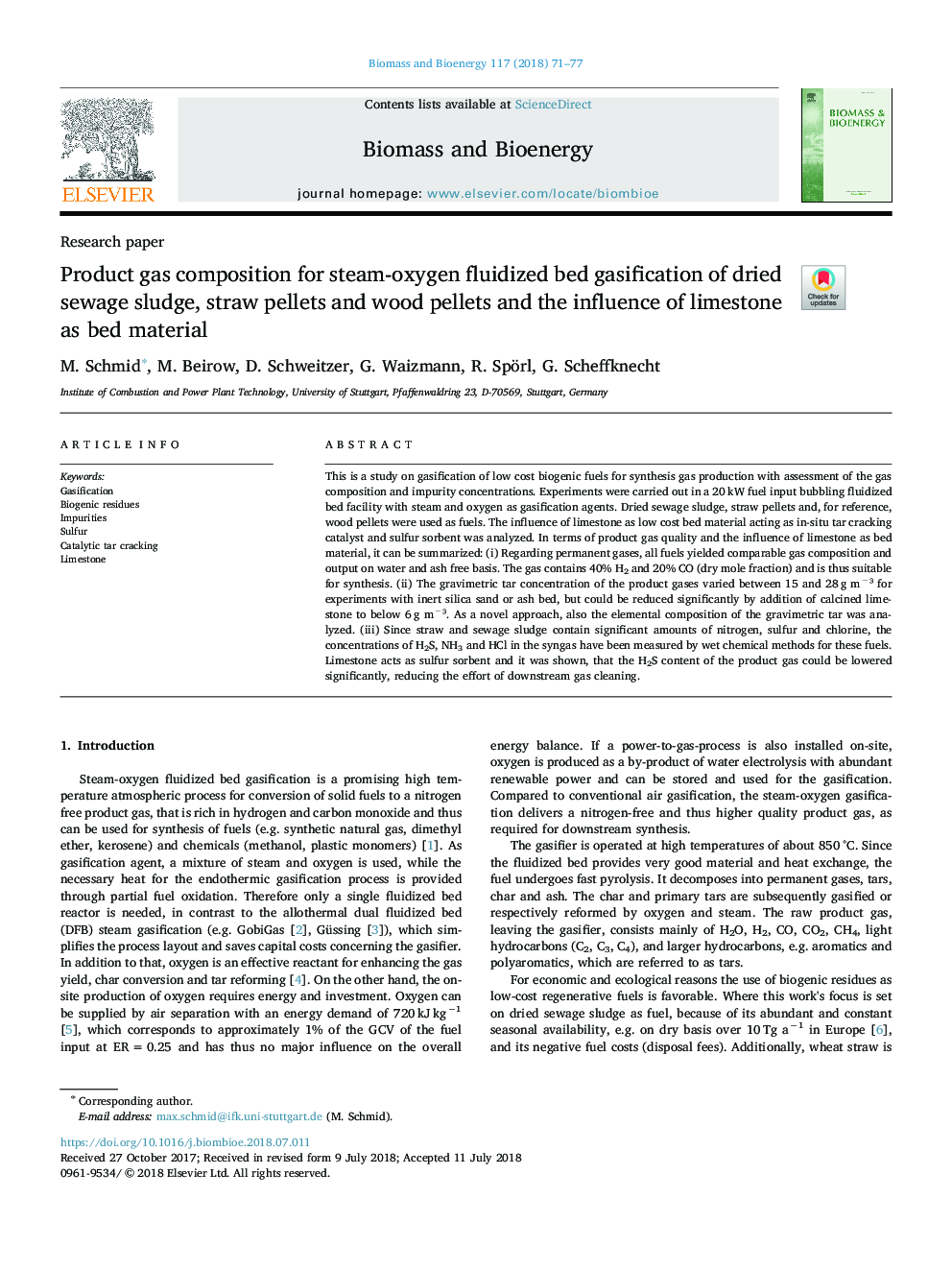| Article ID | Journal | Published Year | Pages | File Type |
|---|---|---|---|---|
| 7062797 | Biomass and Bioenergy | 2018 | 7 Pages |
Abstract
This is a study on gasification of low cost biogenic fuels for synthesis gas production with assessment of the gas composition and impurity concentrations. Experiments were carried out in a 20â¯kW fuel input bubbling fluidized bed facility with steam and oxygen as gasification agents. Dried sewage sludge, straw pellets and, for reference, wood pellets were used as fuels. The influence of limestone as low cost bed material acting as in-situ tar cracking catalyst and sulfur sorbent was analyzed. In terms of product gas quality and the influence of limestone as bed material, it can be summarized: (i) Regarding permanent gases, all fuels yielded comparable gas composition and output on water and ash free basis. The gas contains 40% H2 and 20% CO (dry mole fraction) and is thus suitable for synthesis. (ii) The gravimetric tar concentration of the product gases varied between 15 and 28â¯g mâ³ for experiments with inert silica sand or ash bed, but could be reduced significantly by addition of calcined limestone to below 6â¯g mâ³. As a novel approach, also the elemental composition of the gravimetric tar was analyzed. (iii) Since straw and sewage sludge contain significant amounts of nitrogen, sulfur and chlorine, the concentrations of H2S, NH3 and HCl in the syngas have been measured by wet chemical methods for these fuels. Limestone acts as sulfur sorbent and it was shown, that the H2S content of the product gas could be lowered significantly, reducing the effort of downstream gas cleaning.
Related Topics
Physical Sciences and Engineering
Chemical Engineering
Process Chemistry and Technology
Authors
M. Schmid, M. Beirow, D. Schweitzer, G. Waizmann, R. Spörl, G. Scheffknecht,
